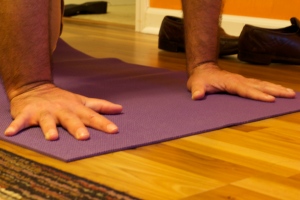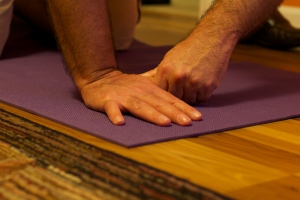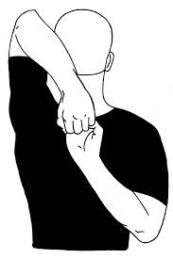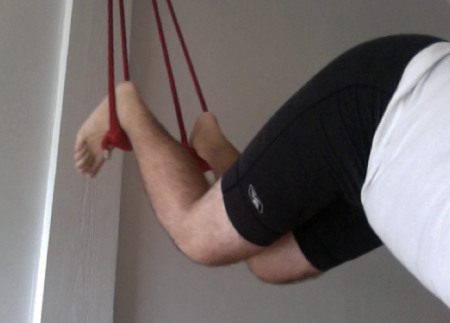This is the continuation of my last blog post about Mary Obendorfer’s workshop. The intermediate classes I attended were more of a refinement of concepts we learned in the basic level classes.
The one concept that I will take home is how crucial the base is in every pose. We did an exercise in Adho Mukha Vrksasana (upward facing tree pose, or handstand) where the palm of one hand was smoothed along the mat along with each finger. The other hand did not get the “treatment.” The student had a markedly noticeable straightness in the side of the hand that got the “treatment” versus the side that didn’t have the hand manipulation. See the progression of photos below of how to manipulate the base of the right hand:
Now compare the two hands. You may be able to tell my right hand (as seen on your left) it is much flatter. Try on your own for a more dramatic comparison.
Mary uttered Geetaji’s words over and over that “Mother Earth feeds intelligence to the practitioner through the base of each asana.” Very profound to think about when you consider what part of your body is touching the floor and the “quality” of that contact.
As far as the workshop as a whole, we worked intensely on seated poses. As stated in the previous post, Mary imparted Geetaji’s words that regular practice of Upavistha Konasana and Baddha Konasana are extremely important to offset “suffering” in standing poses, and to address “pains that are yet to come” as the the practitioner ages.
There are many more things that she covered that I need to practice on my own before publishing my thoughts. She did a tremendous amount of partner work on Ardha Sirsasana (half head pose) seen below. In the intermediate class she held us in this pose for 30 seconds as per instructions from Light on Yoga before going into full sirasasana. I couldn’t last 15. She stopped and asked “did you come out because you are in pain, or did you come out because of something else?” It was something else I couldn’t describe. That is something I will have to unpack within my practice until she comes back next year.




















